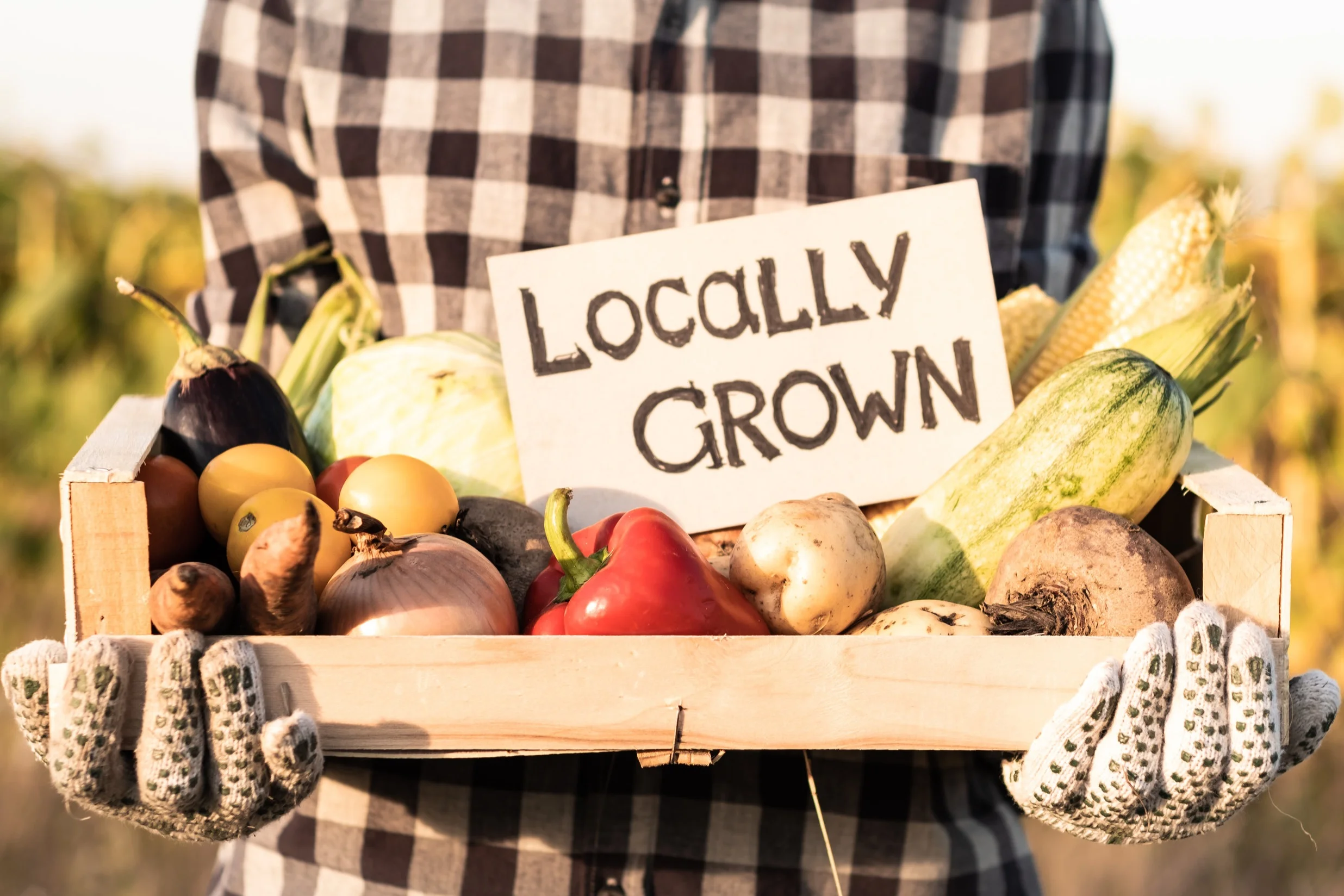The Health (and Economic) Benefits of Seasonal and Locally Grown Food
I read a quote recently that got me thinking about our food. I mean, I’m always thinking about food, but this was different. It read:
“What You Eat Is Not as Important As Where It Came From.”
And while I do believe that what you eat is certainly very important, it’s also true that the quality and source of that food is equally as important, if not more so. This raises the question, how much do we really know about our food? Where did it come from? And how was it grown?
The truth is, our food in this country is not what it used to be. Our soils are void and depleted of minerals and nutrients, our produce is covered in pesticides, and we’re reliant on convenience based packaged, processed and junk food products. Even though we are fortunate to have access to grocery stores and foods from around the world, this privilege is costing us – both literally and figuratively.
The Reasons to Buy Local Food
The majority of Americans don’t know where their food comes from. As a population, we are blissfully ignorant to how our food arrives at the grocery store and subsequently reaches our plate. While perusing the aisles for something to fill snack bags, lunch boxes, pantries and dinner tables, as shoppers we are confused and overwhelmed by convoluted marketing messages meant to make us overspend our hard earned dollars on “edible food like substances” – a term coined by Michael Pollan. You know…the chips, cookies, crackers and factory-made food items.
Unlike our ancestors, we consume produce from the grocery store that is picked and cleaned to perfection. It’s loaded into crates, onto trucks and airplanes and transported to grocery stores over a matter of days or weeks. This food is rarely picked when ripe and doesn’t fit the ideal definition of fresh. This produce is expensive because your dollars are paying for it to be picked, loaded, transported, unloaded and arranged on the shelf. That food becomes even more expensive if it is not in season because of the resources required to grow, harvest and ship it. By the time out of season produce reaches your table, it has lost its luster, is degraded and depleted of vitamins and nutrients, and lacks in flavor.
This way of purchasing produce is not sustainable – for the economy, environment and our wallets. Eating seasonally and locally is both socially conscious and a matter of promoting better health.
Advantages of Buying Locally Produced Food
As you navigate the trends of the wellness world, remember to embark on your health and nutrition journey as a conscious consumer. Eating local, seasonal foods may seem popular as of late, but there are legitimate reasons to become a “locavore” beyond being on-trend. Eating locally, and seasonally, actually has loads of health, economic and environmental benefits.
How Does Buying Local Food Help the Economy?
Eating locally, usually means that you are eating seasonally as well. What exactly does that mean? Consuming foods that are grown locally means that you purchase your produce from the local farmer’s market – where farmers from your local region gather to offer you the freshest, ripest, most nutrient dense food available to your area. That also means contributing to the bottom-line of small businesses in your immediate proximity.
When you eat in-season foods from local markets near your home, you’ll notice that the prices are lower – because when there’s an abundance of butternut squash in the fall for example, prices go down (thank you, supply and demand). By buying from your local farms, you keep your dollars circulating in the local community.
You can also choose to frequent restaurants and grocery stores in your area that feature locally sourced and regionally seasonal foods. These establishments need your support to grow and thrive in order to inspire others to join the movement.
Support Your Local Farmer + Farmers Market
Local farms grow and harvest with the seasons. When you buy food from the farmer’s market, you are choosing to eat with the seasons, since what is available is strictly the fruits and vegetables that are able to grow in your local climate. And when you shop at your farmer’s market, you support your local farmer and neighbor, who cares about the quality of the soil, the health of the harvest; who cares about their customers. When you shop small and local and support a nearby farm, you are putting money back into the farmer’s pocket and supporting their family.
Health Benefits of Eating Locally Grown Food
As with most things surrounding our diets there are pros and cons of eating local, seasonal food. Yes, there are more limitations in choice and fresh produce has a shorter shelf-life than packaged foods. But when it comes to your health, the advantages of making local and seasonal foods a central part of your diet tend to outweigh the disadvantages.
Eat the Healthiest Food Available
When you eat seasonally, you enjoy food that is harvested the day before or morning of purchase (from the farmer’s market). The quality of the soil is much more nutrient dense than the soil on large conglomerate farms, yielding a much tastier fruit or vegetable. Fresh produce will also contain remnants of soil that harbor good bacteria. These bacteria live on the surface and skin of the produce and are essential for proper immune health and gut function.
These foods are also picked at peak ripeness, so they are higher in vitamins and minerals than their out-of-season counterparts found in the grocery store. Additionally, most produce found at the farmer’s market is organic !
Support Your Personal Health Goals
One of the big benefits of eating with the seasons is that there are a wide variety of fruits and vegetables available. These foods can broaden your palate and expose you to different ingredients and flavors that you otherwise wouldn’t have the opportunity to try. And because buying seasonally usually means buying locally, you are likely purchasing produce that has a higher nutritional value because of how it’s grown and when it’s picked. Additionally, when you eat with the seasons, you consume foods that are designed to support your health in the given region and climate.
For instance, did you know that apples grow in the fall as a transition food? They help the body to get rid of excess heat and cool down before the winter months settle in – opposite the spring when there is an abundance of leafy greens to help us alkalize, detox and lose extra pounds after a long winter of heavier foods. Fall foods include choices like hearty root vegetables and warm comforting spices – foods that support digestion and boost the immune system.
Live in Sync with Nature’s Rhythm
When you live in tune with nature’s cyclical rhythm, you become more aware of the beauty that surrounds you. This is true for changes in weather and climate, and also true for food. Like with the apple, your body thrives off of food that grows in your local region, that is ripe and harvested from local gardens and farms, with the intent to support your health during the given season.
Eating and enjoying what is local to your environment and region is good for your body and for the planet – less transportation emissions for one thing. You can live in balance with your surroundings, instead of at conflict with nature, by embracing the limitations of choice. Adopting a seasonal diet, abundant with local produce, can also help you to explore your creativity in the kitchen! So next time you reach for a pack of strawberries in October, ask yourself how they got there (and maybe try an apple instead!).
So how does your food find its way to your table? Who planted the seed, watered it, harvested it and packed it? Take back the control. As a conscious consumer, you vote with your dollars. Use your vote to support the environment, your community, your local economy, and your health.


